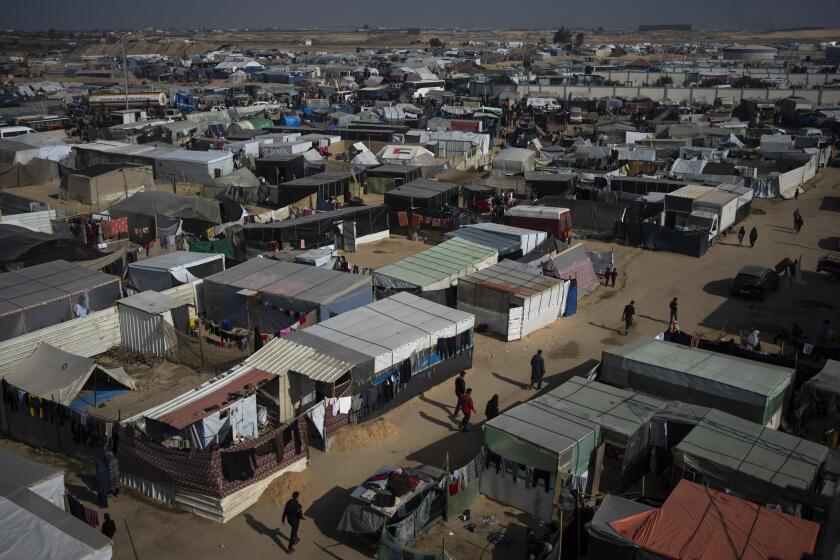Slick Forces Closure of Water Plant : Saudi Arabia: Officials fear machinery might be fouled by the oil spill. Thirty more sites along the coast may be in danger.
In the first apparent industrial fallout from the giant oil slick drifting down the Persian Gulf, Saudi Arabia was forced to close a water desalination plant on its northeast coast Friday to prevent petroleum from fouling the machinery.
David Olsen, a spokesman for Saudi Arabia’s Meteorological and Environmental Protection Agency, described the closure of the relatively small, freshwater plant at Safaniya--about 60 miles north of the industrial city of Jubayl--as precautionary.
But environmental experts said the action bodes ill for the 30 water desalination plants that line the Saudi coast farther south, now in the direct path of the huge oil slick.
Olsen explained that the Safaniya water plant was closed because it works by reverse osmosis, a process akin to passing salt water through a huge, finely meshed sieve to remove the salt. “The reverse osmosis component at the plant can’t handle any level of oiling,” he said.
Lt. Cmdr. Paul Milligan of the U.S. Coast Guard said a helicopter flyover on Friday showed an oil “sheen” on the water inside protective booms, deployed at Safaniya to protect water intakes.
The Safaniya plant provides fresh water for workers employed by the Saudi oil company Aramco at the world’s largest offshore oil field, located near the town. While the company also requires water to produce crude oil, that supply is produced by another desalination facility not using reverse osmosis and not threatened with closure.
Olsen said the freshwater requirements of the town will be met from plants farther south at Jubayl and Al Khubar.
The oil slick now along the Saudi coast from Safaniya to Ras az Zawr is believed to have come from an Iraqi artillery attack on storage facilities in Khafji, about 40 miles to the north of Safaniya. There is also an enormous slick drifting south from the Sea Island terminal off Kuwait, where Iraqi forces were accused of releasing millions of barrels of oil in an act the Bush Administration termed “environmental terrorism.”
Milligan said that, besides the slick along the coast, several “large patches are moving southeast possibly posing a threat to the island of Abu Ali, an important environmental area.” The island lies just north of Jubayl and is a major breeding area for sea birds and turtles.
The Coast Guard spokesman said there is heavy oiling of beaches from Ras az Zawr to Safaniya, especially at Tanajib, 11 miles south of Safaniya. Oil is also threatening wildlife areas at the entrance to mangrove swamps in Manifah.
A further sign of Saudi concern about the impact of the spill was the disclosure that the government is making final arrangements to import heavy oil-skimming vessels from the Soviet Union.
A second flight from Japan carrying flotation booms arrived Friday; officials said four more flights are planned.
More to Read
Sign up for Essential California
The most important California stories and recommendations in your inbox every morning.
You may occasionally receive promotional content from the Los Angeles Times.






